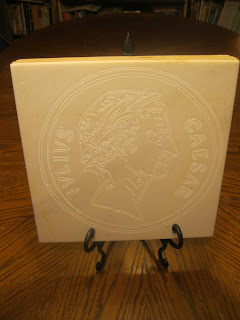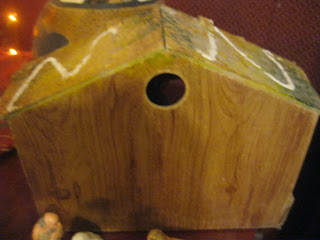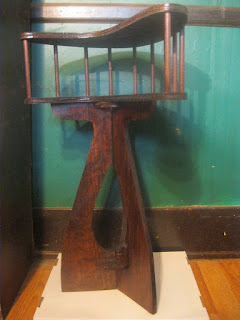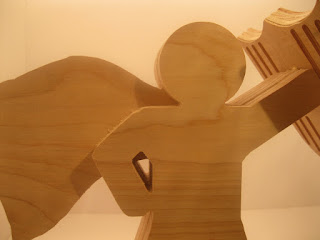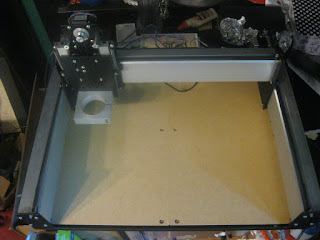I recently became aware of some exotic new materials for 3d printing. Notably, I've come across some materials by
colorFabb. They're playing with a number of unusual things, but the ones I'm dealing with right now are their copper and bronze filaments. These aren't just colored. They're PLA filament with a substantial addition of copper and bronze powders. The ideas is that with appropriate treatment, they look for-real metallic. So how do they work?
They print quite well in my quick tests, sticking to the usual blue-tape-and-hairspray surface I usually use as well as any PLA with no noticeable warping. The marketing material indicates that the metal content means that they cool faster than regular filament, so they're particularly good for pieces with overhangs. I haven't done anything with exaggerated overhanging material yet, but it at least sounds plausible.
The printed material seems a bit fragile. It doesn't fall apart if you breathe on it wrong, but it does break more readily than 100% PLA. But the
big difference I noticed was the weight. Not surprisingly, the metal-bearing filament is a
lot heavier. It's not as heavy as an all-metal item would be, but there's definitely some heft. It also feels a bit cool to the touch, a bit like something metallic would.
However, they don't come out looking like metal. The bronze comes out as a sort of sandy light yellowish brown while the copper comes out a red which is definitely in the copper color range, but neither appears metallic.
That's where the post-processing comes in. The first step is to sand the surface of the print smooth, optionally hit it lightly with a little black paint to create the illusion of a dark patina, and finally rub with a brass polish.
(That bit on the right is a late Warring States-era dagger axe, the first in a series of historically accurate polearm hair sticks I'm making for Stephanie.)
So far, it's coming out OK, but not great. I'm getting a definite metallic sheen, which is definitely understated in the photo but still not all that impressive. Clearly, I need a better sanding and buffing technique. I've seen a Dremel used with some buffing heads, but in my tests, I've been gouging the plastic pretty badly with it. However, the steel wool I'm using isn't getting outstanding results. Finely detailed pieces are also a problem. I'm having a difficult time with all the corners and little protrusions. I gave up on the retro spaceship from the first picture and printed a little sword in the copper to see if that would work better. There is one interesting thing, though: within a few minutes, the bronze head on the dagger axe was already developing a pale green patina. So, yeah, actual metal.
That's nifty, but there's one other notable thing about this filament. It's expensive. It's
really expensive. It costs significantly more by weight than regular PLA, and it's much denser, so the same weight gets you a fraction as much length. All told, it's more than an order of magnitude costlier than plain PLA on a meter-by-meter basis. So it's neat for specific artistic effects, but run test prints with cheaper stuff first to make sure they're absolutely perfect. Mistakes with the metal-bearing filament are costly.

